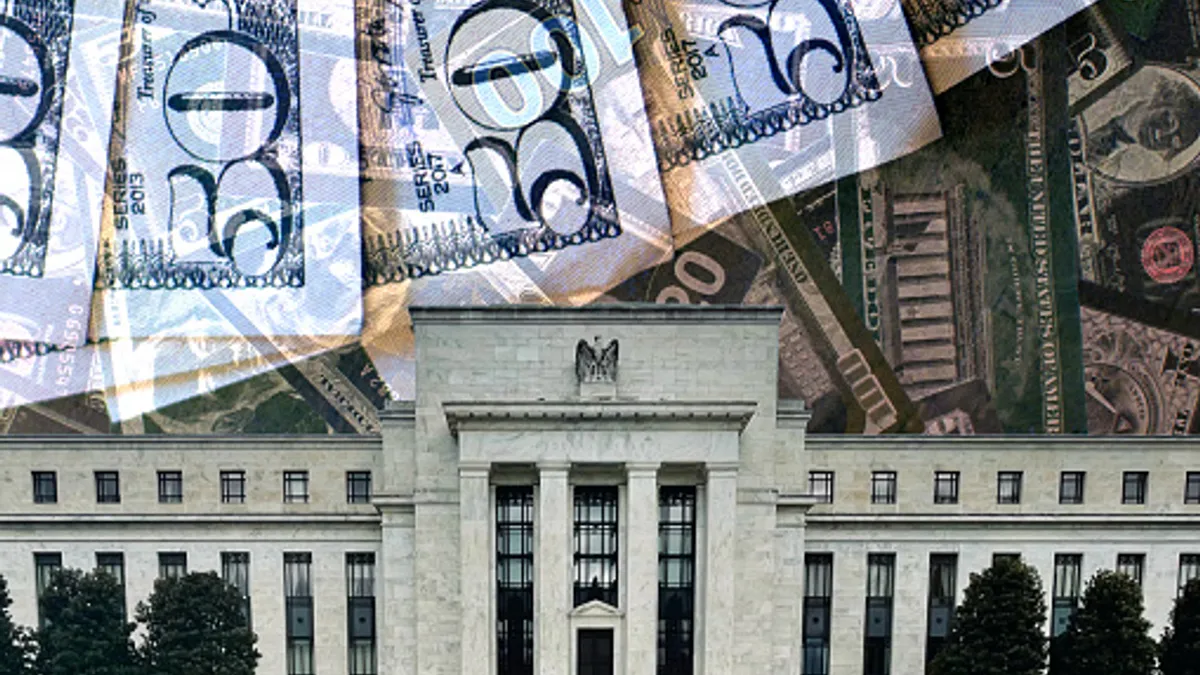Dive Brief:
- Federal Reserve policymakers, after deflating price pressures from a 40-year high, will likely hold interest rates “higher for longer” as they face greater difficulty in coming months reducing inflation to their 2% target, Fannie Mae said Wednesday.
- Inflation will probably remain stubborn because of low productivity growth, solid wage gains and “base effects,” or the fact that measurable progress against inflation will naturally stall after unusually high price pressures from June 2022 stop influencing 12-month data, Fannie Mae said in a report titled, “Inflation is Slowing, But Fully Quelling it Will Be Tough.”
- “The decline in headline inflation is encouraging, but year-over-year measures will work against further progress in the second half of 2023,” Fannie Mae Chief Economist Doug Duncan said in a statement. “We expect the Federal Reserve will stick to ‘higher-for-longer’ policy after one or two quarter-point increases [in the federal funds rate], until they conclude that the core inflation rate is sustainably at” their target.
Dive Insight:
Price pressures have eased as policymakers raised the federal funds in 10 straight meetings between March 2022 and May — the most aggressive fight against inflation in four decades.
The core consumer price index excluding volatile food and energy increased 4.8% in June, the lowest annual rate in more than two years, the Labor Department said last week.
So-called headline CPI, which includes food and energy prices, increased 3%. Policymakers focus on core CPI as a more reliable indicator of underlying inflation.
The producer price index for final demand, a measure of what suppliers charge, also rose less than expected last month, increasing 0.1% on an annual basis. Companies often pass on to consumers the higher cost of inputs.
Despite the encouraging data, Fed Chair Jerome Powell and other policymakers have cited the robust labor market and said this month that they need to further raise borrowing costs to quash inflation.
Unemployment fell in June to 3.6% from 3.7% in May. Also, average hourly wages adjusted for inflation rose 1.2% last month from a year earlier, the second consecutive month of gains in real pay after two years of inflation-induced losses.
Traders in interest-rate futures on Wednesday set 99.8% odds that policymakers will raise the benchmark rate by a quarter percentage point during a two-day meeting ending July 26.
The central bank held the main interest rate at a range between 5% and 5.25% at a gathering last month. Nevertheless, Fed officials forecast in a median estimate that they will increase the benchmark rate to 5.6% by the end of this year.
Fannie Mae predicted that the federal funds rate and unemployment rate next year will average 4.8% and 4.7%, respectively. It upgraded its forecast for 2023 economic growth a full percentage point to 1.1% from 0.1% in June.
The mortgage finance company still expects that a mild recession will begin in the fourth quarter or the first quarter of next year, “while noting that the probability of a ‘soft landing’ may have increased of late.” It downgraded its projection for economic growth next year to minus 0.1% from 0.8% in June.
More immediately, the economy will shrink 0.4% during the fourth quarter and 1.3% during the first quarter of 2024, Fannie Mae said. Core CPI will end this year at 4.3% and 2024 at 2.6%.















